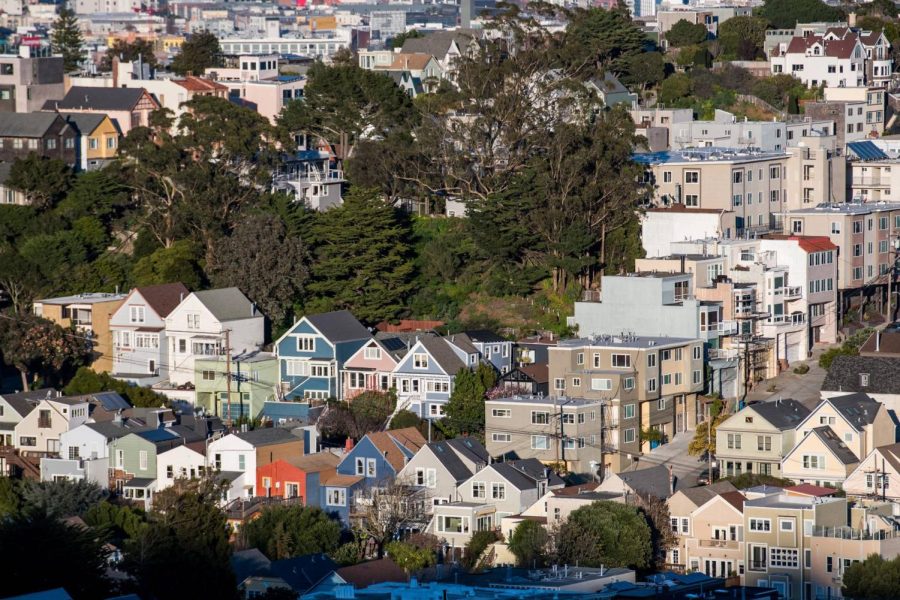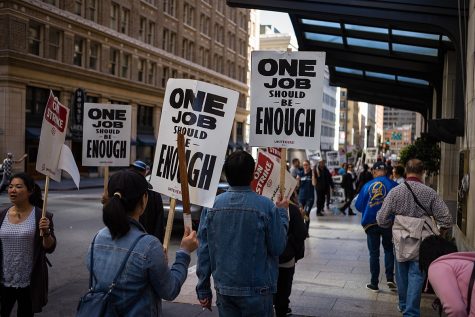The Rise and Fall of the Bay Area Housing Market
Since 2021, housing prices have skyrocketed. Although average interest rates were down, starting 2022, the Federal Reserve has raised the interest rate to 3.9%. Combined with the fact that there isn’t much land to build houses, living in the Bay Area has become increasingly expensive.
The Bay Area hosts a high population of homeless and low-income individuals who cannot afford to buy or rent their own place. In spite of the ongoing homelessness crisis, some residents adopt a “Not In My Backyard” mantra — abbreviated as NIMBYs — to resist new home or apartment development in their community in fear of overcrowding, gentrification, and an increased cost of living.
Nevertheless, the demand for new housing projects are a lot higher than the supply available to build them. While recent trends suggest that the housing market is due to a shift in the buyers’ favor in 2023 as prices go down, it is hard to tell for sure.
One reason for soaring housing prices is the massive amount of renters that flock to the Bay Area in search of better employment opportunities, namely within Silicon Valley — the global epicenter of emerging tech. In lieu of insufficient housing capacity to accommodate newcomers, residents are forced into more crowded living arrangements at higher prices, culminating in the Bay Area hosting three of the ten most expensive metropolitan areas in the United States.
Environmentalist concerns are commonly invoked as a NIMBY tactic used to stall housing development. “The California Environmental Quality Act avoids construction in environmentally sensitive areas [to prevent] building too many oil refineries, especially in places where there shouldn’t be,” shared California State University, East Bay Economics Professor Dr. Filippo Rebessi, mentioning that this law also allows any individual to appeal and inquire about more reports regarding construction.
The key issue with construction appellations lies in the lengthy delays necessary to conduct an extensive review to confirm environmental integrity. “Suppose you want to build a new homeless shelter: there could be someone in the community [that says] ‘you have not really taken [into] account the impact that this is going to have on pollution, noise, on X, Y and Z’” explained Rebessi, stating that the Environmental Quality Act sees regular abuse as a leverage to prevent new construction by saying that it could negatively affect the environment. As a result, funds and interest for new building projects tend to gradually disappear over time.
Aside from individual NIMBY efforts to influence the state of the housing market, inflation can significantly alter the pricing of housing, contributing to the housing crisis. To temper the effects of inflation, the Federal Reserve is increasing interest rates. According to Rebessi, it may seem like the housing market is pushing in favor of buyers because of the decrease in prices; however, the mortgage rate payments have slightly gone up or stayed about the same as they were a few months ago.
“[The housing crisis] is improving slightly, but it’s nothing dramatic,” added Rebessi, proposing that one possible solution to the homelessness issue is to build apartments near transit centers. Doing so would also benefit young professionals by ensuring affordable housing with nearby amenities and easy access to transportation while also helping decrease traffic congestion
Cities out-of-state like Seattle, Washington and Austin, Texas are starting to prop up their own technological hubs, which may threaten Silicon Valley’s long-standing prominence in the industry. While the Bay Area is unlikely to fade into obscurity due to the presence of an advanced education sector and a number of attractive, high-rated colleges, the lack of housing needs to be addressed and that requires teamwork from both builders and the community to ensure that the Bay Area remains accessible and affordable in the future.













